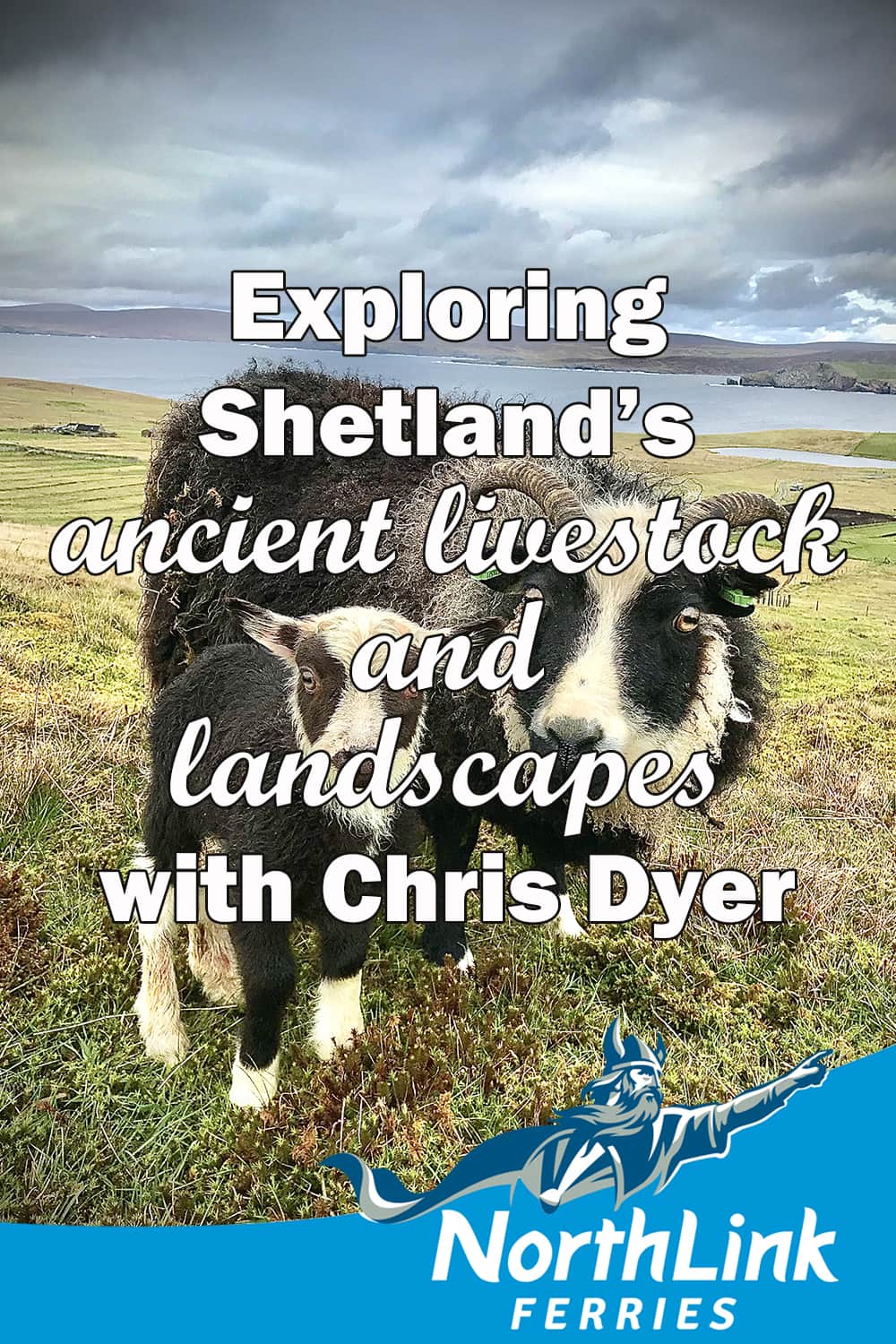Exploring Shetland’s ancient livestock and landscapes with Chris Dyer
When sailing from Aberdeen to Shetland with NorthLink Ferries, you will arrive in Lerwick, the island’s capital. Just a quick ferry trip from Lerwick lies the charming island of Bressay, and it is here that you can find Garths Croft.
I concentrate on the native breed of Shetland sheep to retain and enhance their admirable qualities and traditional fleece colours and patterns – there are over fifty different varieties!
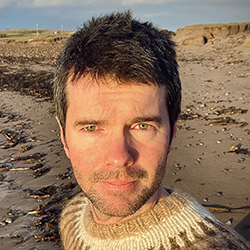 Listed within the top five things to see in Shetland, Garths Croft Bressay is a sustainable agricultural holding owned by professional archaeologist Chris Dyer that focuses on native and traditional breeds. Chris offers a unique opportunity by welcoming visitors to his island home for a tour of his farm.
Listed within the top five things to see in Shetland, Garths Croft Bressay is a sustainable agricultural holding owned by professional archaeologist Chris Dyer that focuses on native and traditional breeds. Chris offers a unique opportunity by welcoming visitors to his island home for a tour of his farm.
With his expertise in history and archaeology, Chris also offers bespoke guided tours around Bressay and the other islands in Shetland.
We were delighted to speak with Chris who offered us a fascinating insight into farming life, the significance of native Shetland sheep and his background in archaeology!
Q. Can you tell me a little bit about yourself and your background?
A. I am originally from the South of England near London. My background is in heritage and archaeology as I have an undergraduate degree in History and Archaeology and a Masters in Archaeological Research from the University of Hull. I worked for organisations and undertook excavations on historic sites across England before relocating to Shetland almost twenty years ago to become Assistant Regional Archaeologist for the Shetland Museum and Archives. Whilst living in England, I volunteered at a farm in Yorkshire and when I moved to Shetland, I continued to help at farms in Bressay during the busy lambing and shearing seasons.
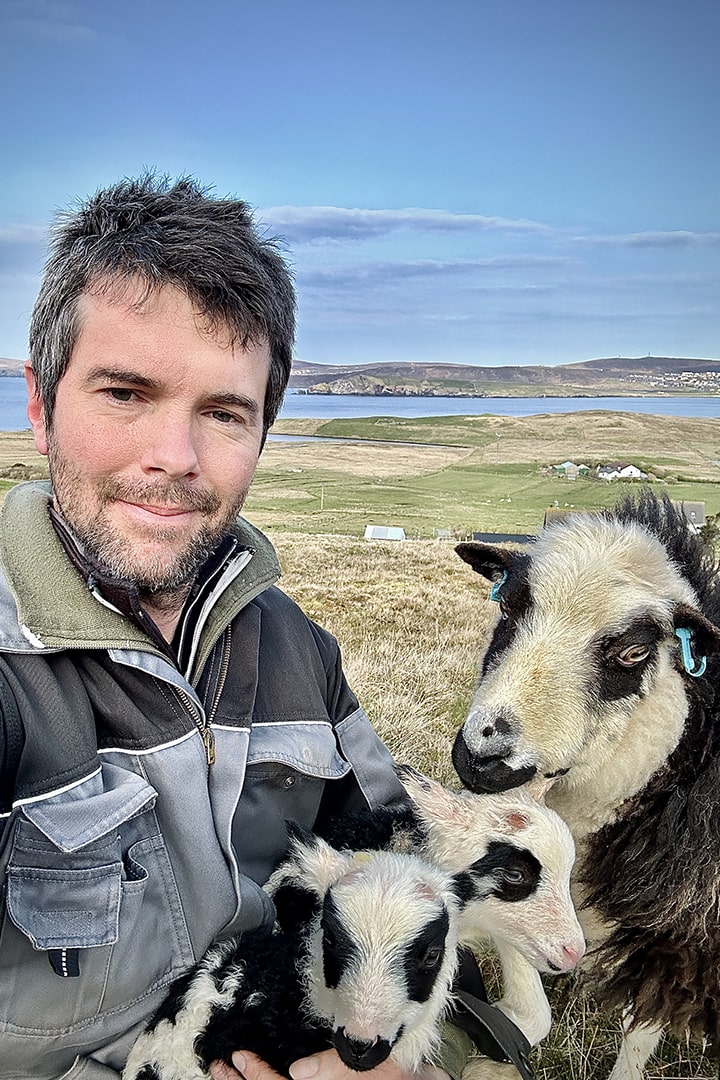
Q. What inspired you to begin welcoming visitors to your croft and establish the business that you run today?
A. As a historian and archaeologist, I’ve always been interested in the island’s native breeds, past landscapes and how people lived and farmed here. When working for the Shetland Museum and Archives, my role was public-facing and I enjoyed meeting people and sharing information to interpret, promote and curate the historic landscape here. Initially, people found me because of what I was doing; creating an experience that combines archaeology and history (one of the main reasons people visit Shetland) with agriculture and sustainability. However, there was never a ‘plan’ to do this – it has been a completely genuine thing that has evolved organically. My background in the public presentation of history and archaeology, as well as the desire to share my island home and landscape, encouraged me to start the unique and bespoke experience that I now provide.
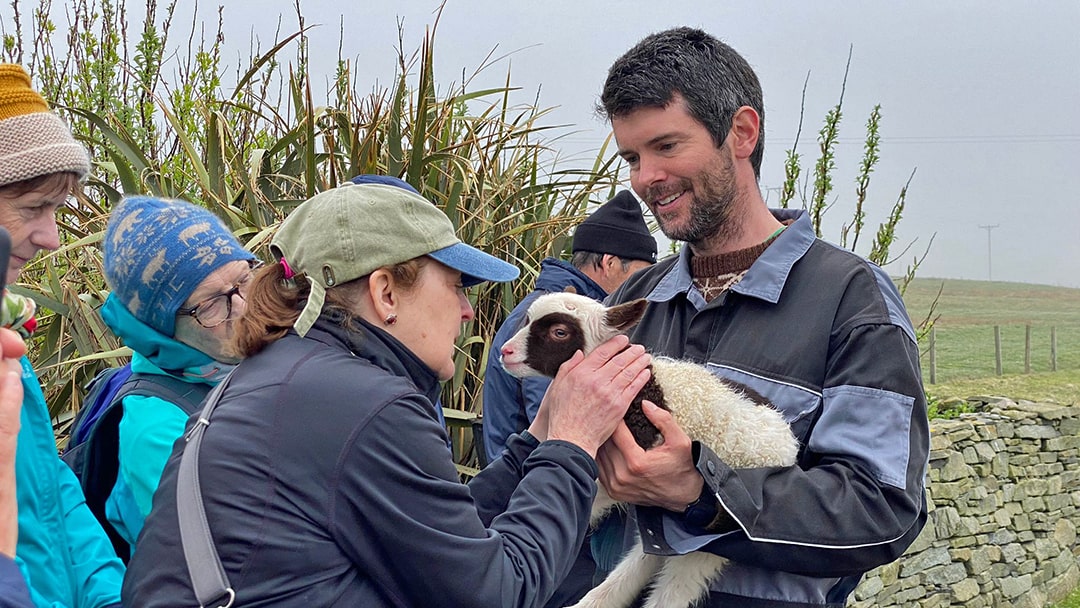
Q. What can visitors expect to see or do on a visit to Garths Croft Bressay?
A. I usually begin with refreshments before giving visitors a tour of the croft and showing them the animals, drystone walling, woodland and fruit and vegetable growing. I provide a demonstration of working sheep dogs with the sheep and visitors can feed the flock, take photographs, make memories and see their incredible fleeces – people from all over the world are passionate advocates for Shetland’s fibres and textiles. I then take visitors out and into the landscape of Bressay. It’s a beautiful island with only 300 residents, so it’s very peaceful. I like to show people the Viking longhouses, Iron Age brochs, prehistoric homesteads and there is also the stunning National Nature Reserve of Noss.
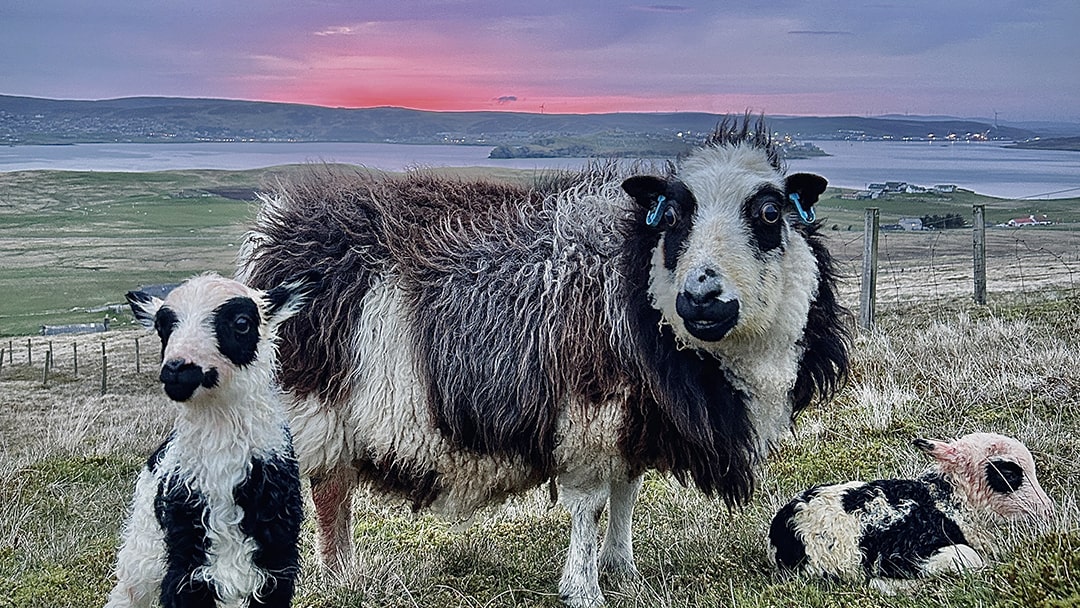
Q. Can you tell us a bit about the animals that you’ve got at your farm and the significance of native Shetland sheep?
A. I keep poultry year-round and pigs during the summer months. I concentrate on the native breed of Shetland sheep to retain and enhance their admirable qualities and traditional fleece colours and patterns – there are over fifty different varieties. The native sheep links to the Viking heritage in Shetland. Each of the traditional markings has a name; for example, the fleece marking ‘flecket’ is named after the Norwegian word ‘flekr’ which means dappled or spotted. These breeds go back millennia. We know that the Viking and Scandinavian influence is strong in Shetland, as seen by the place names and language, but you also see it in agriculture.
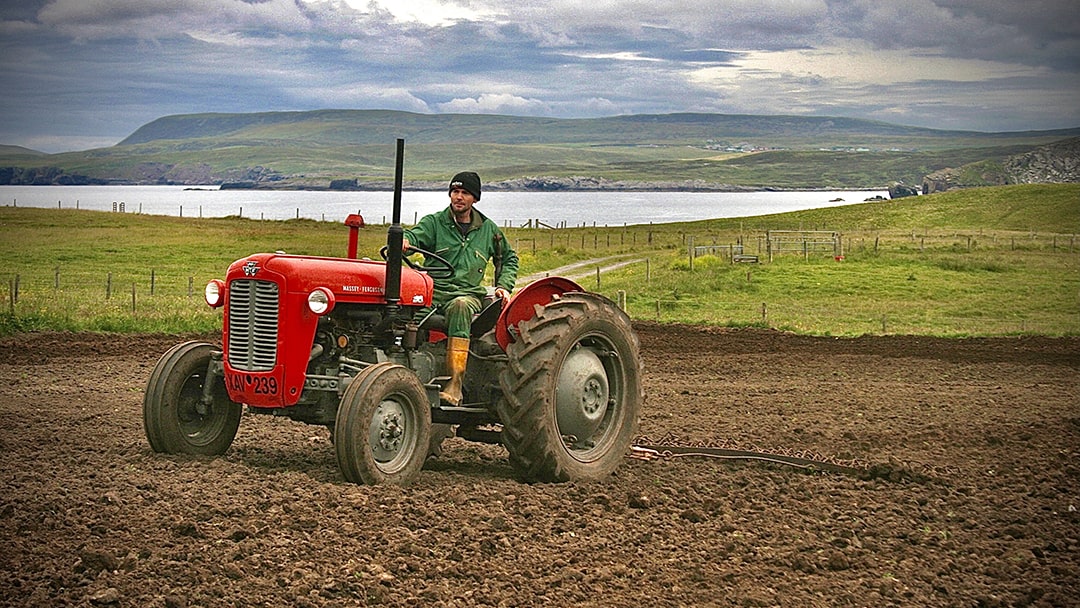
Q. What does a typical day look like for you?
A. It is very mixed! Some days I’ll be working on the croft, while others I’ll be giving visitors a tour of my farm and historic sites around Shetland. Some days I’m busy building drystone walls, and I am also a retained firefighter, so sometimes I’m occupied with that! I would say I spend most of my time during spring, summer and autumn working with individuals, couples and groups to promote the heritage and culture of Shetland. I personalise my tours depending on the interests of the groups, and I can take them all around Shetland, not only Bressay where I am based.
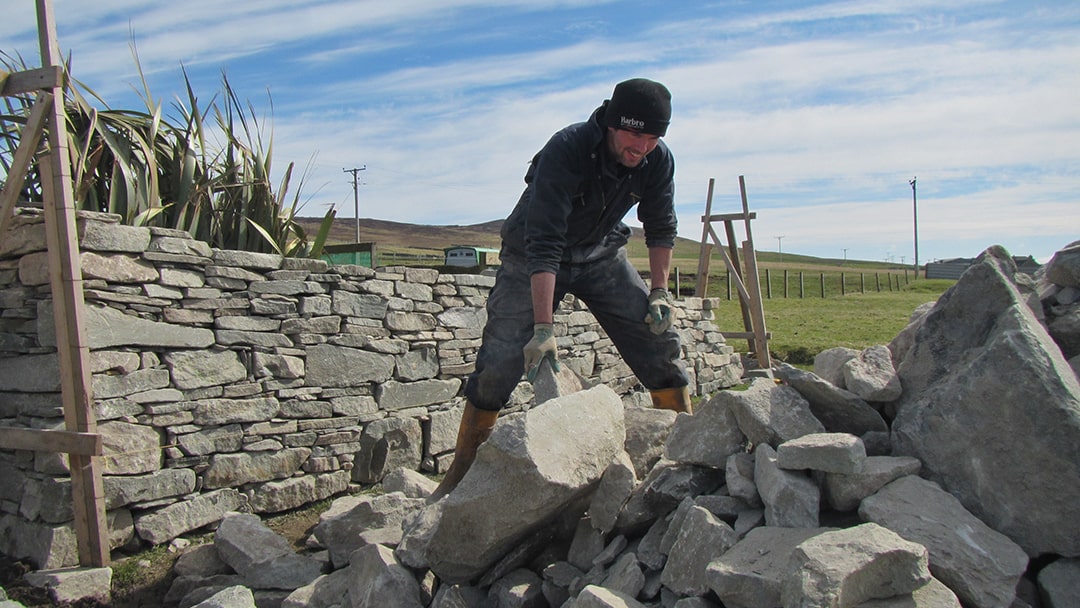
Q. It is clear that you have a strong focus on sustainability. Could you tell us a little bit more about some of the sustainable initiatives you have implemented?
A. I’m a drystone wall builder, principally during autumn and winter months. The drystone walls I’ve built at the croft provide shelter allowing me to plant trees, bushes and shrubs and create a woodland. Prior to human settlement, there used to be extensive scrubby woodland over Shetland, and we see evidence of this in the vegetation and the pollen within the peat here. The drystone walls provide a habitat for nesting birds and protection for growing vegetables and fruit trees as I produce around 80% of my own fruit and vegetables on the croft. In turn, substantial numbers of migratory birds seek shelter within the woodland during the Spring and Autumn. Another sustainable initiative involves my pigs which I use to cultivate, dig over and fertilise the land without the use of artificial fertilisers.
Q. What are some of the most rewarding aspects of your work?
A. I love the lambing season and seeing new life everywhere. However, I would say the most rewarding aspect of my work is engaging with visitors and being able to truly enhance their experience of Shetland by taking them off the beaten track to unlock over 6,000 years of human history, whether it’s climbing to the top of a 2,500-year-old Iron Age broch or through the front door of a Viking longhouse.
To find out more about Garths Croft Bressay, please visit:
https://garthscroftbressay.com/
@garthscroftbressay
GarthsCroftBressay – All You Need to Know BEFORE You Go (2024) (tripadvisor.com)
 By Amy Leith
By Amy LeithBorn and raised in Aberdeen with an admiration for Orkney and Shetland, loves to travel and visit new places, enjoys cooking, always listening to music, spends a little too much time on TikTok.
Pin it!